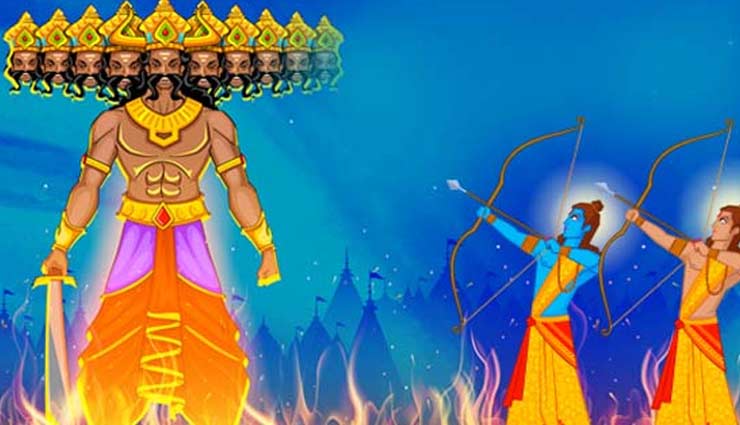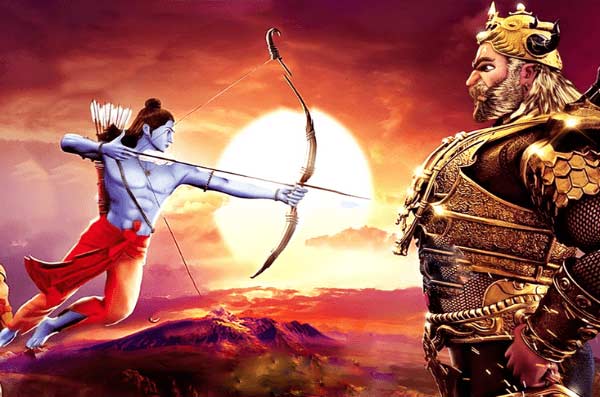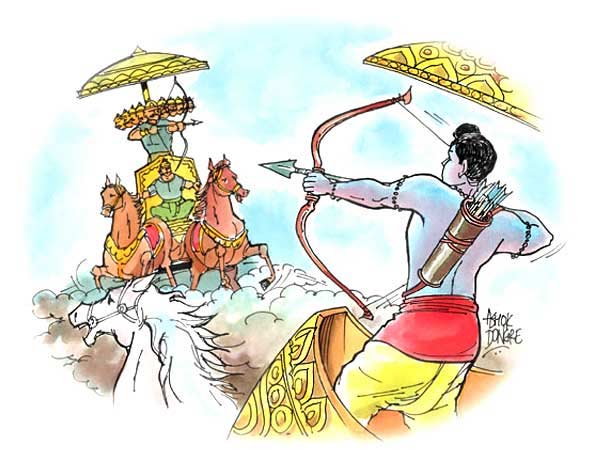5 Facts You Are Unaware About Dussehra
By: Priyanka Maheshwari Sat, 05 Oct 2019 12:40:29

On the tenth day of the Ashvin month of the Hindu calendar, Dussehra or Vijayadashami is celebrated throughout India. It is the day when Lord Rama slayed the demon king Ravana and Goddess Durga annihilated the demon Mahishasura after a long battle.
Celebrating Dussehra or Vijayadashami reminds us that, although, at times, it may seem like evil has gained the upper hand, good eventually emerges victorious. Throughout our country, this day of victory of good over evil is celebrated in various ways — be it through the all-night Ram Leela in parts of North India; the large-scale processions taken out in Kullu, Himachal Pradesh; the Garba in Gujarat; or the Golu in parts of South India.
However, India is also a country rich in diversity. Which means that every festival has its fair share of associated stories and ways of celebration. In that context, here are 5 lesser known facts about Dussehra:
* Ravana is also worshipped: Although Ravana is considered the ultimate antithesis of ‘good’ by a majority of Indians, there are parts of India where he is loved and venerated. Take Mandsaur and Vidisha in Madhya Pradesh for example. Here Ravana is not only respected but also worshipped — there are temples dedicated to him. Ravana is revered in Mandsaur as it is believed that his wife Mandodari hailed from here. So, that makes him the son-in-law of Mandsaur. People of Mandsaur also respect Ravana for being wise and knowledgeable and for his devotion to Lord Shiva.
Similarly, the Gond Tribals of Gadchiroli, Maharashtra, worship both Ravana and his son Meghanada. They believe that Ravana is misrepresented as a cruel demon and point to Valmiki Ramayana in which he is praised for being knowledgeable and a great king.
In Sri Lanka, Ravana has been given the status of a demi-god. It is believed that under him, the country witnessed unparalleled advancements in science and medicine. In fact, several books on Ayurveda written by Ravana are still in existence.

* Dussehra is not just about Rama slaying Ravana: While Dussehra is usually associated with the victory of Rama over Ravana, in East and South India, Dusshera is celebrated for different reasons.
In West Bengal, and especially Kolkata, the statue of Maa Durga annihilating the demon Mahishasura towers over all. Men, women and children gather around in reverent awe as the drums roll and the priests chant prayers seeking her blessings.
Did you know that down South, Mysuru gets its name from the demon king Mahishasura? Here, Dussehra is about celebrating the victory of Goddess Chamundeshwari over Mahishasura. In Mysuru, the tradition of celebrating Dussehra began under the Vijaynagara kings in the fifteenth century — this year marks the 418th anniversary of these celebrations.
Meanwhile, in Telangana, Goddess Gauri is praised and worshipped with floral arrangements, with women offering special foods to the deity. And, in the sleepy town of Kulasekarapattinam in Tamil Nadu, Goddess Kali is revered for all her fierce glory and powerful persona.
* Marks the change of seasons: Indian traditions have always had their roots in scientific reasons. The yagnas performed during Navaratri and Dussehra are believed to cleanse the environment of disease-causing germs prevalent during the shift from monsoon to winter — which is when Dussehra is celebrated.

* Pandavas complete their exile: During their exile, the Pandavas hid their weapons in the branches of the Shami tree. On completion of their exile, they went back to retrieve their weapons. They worshipped the weapons and also the tree in which they hid them. Today, to mark this occasion, Ayudha puja is also performed during Dussehra. In fact, in North India, Ayudha Puja is known as Astra Puja. With changing times, even machines and vehicles are worshipped during Ayudha puja.
* Initiation into the world of letters or Vidyarambham: In Kerala, Dussehra is considered an auspicious day for introducing children to the world of letters. Children between three and five years of age are initiated into learning by making them write the mantra ‘Om Hari Shree Ganapathaye Namah’ on a tray of rice grains. After the ceremony, study materials such as slate and pencil are distributed by those children. The ceremony is called Ezhuthiniruthu in Malayalam.





